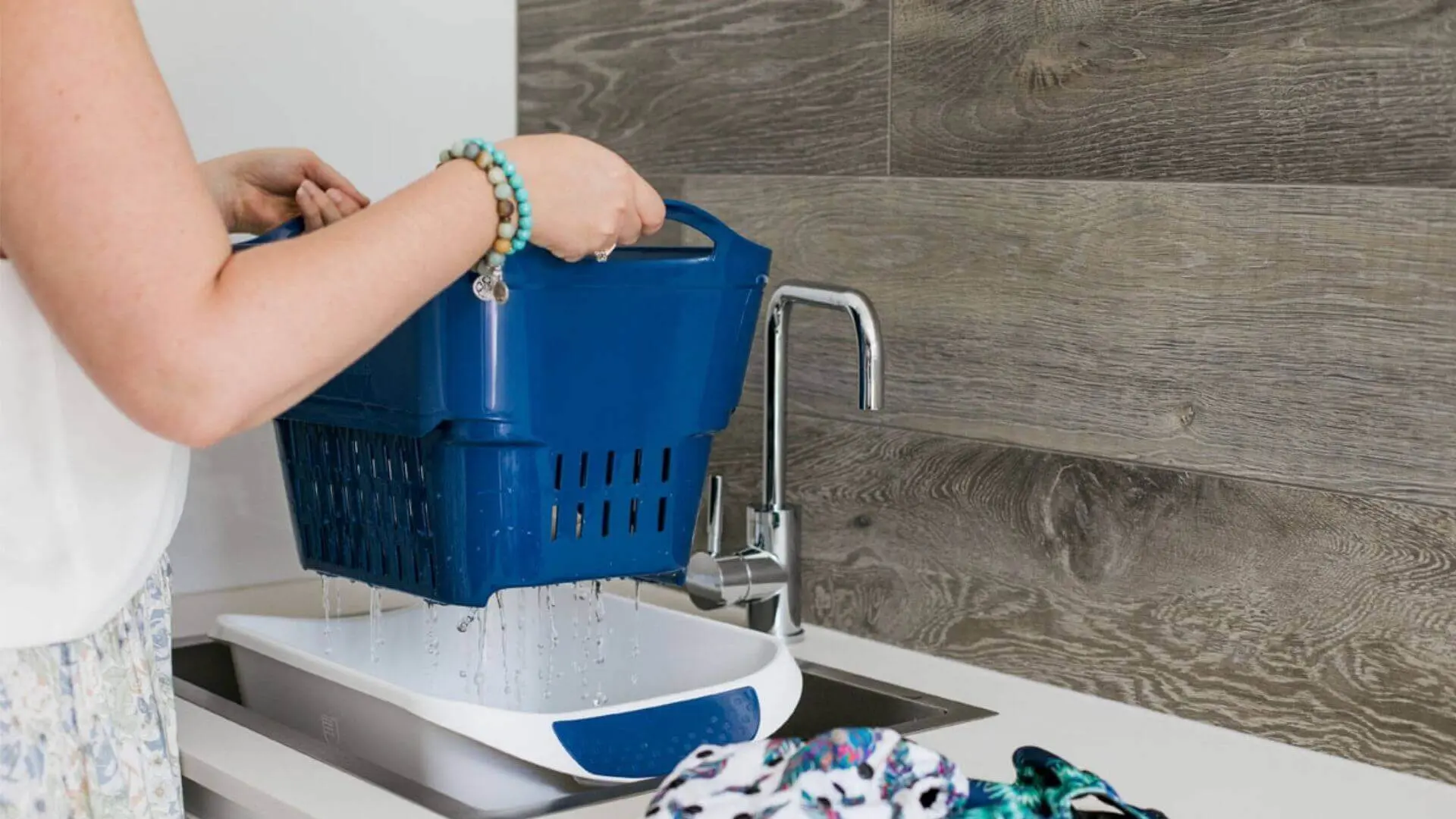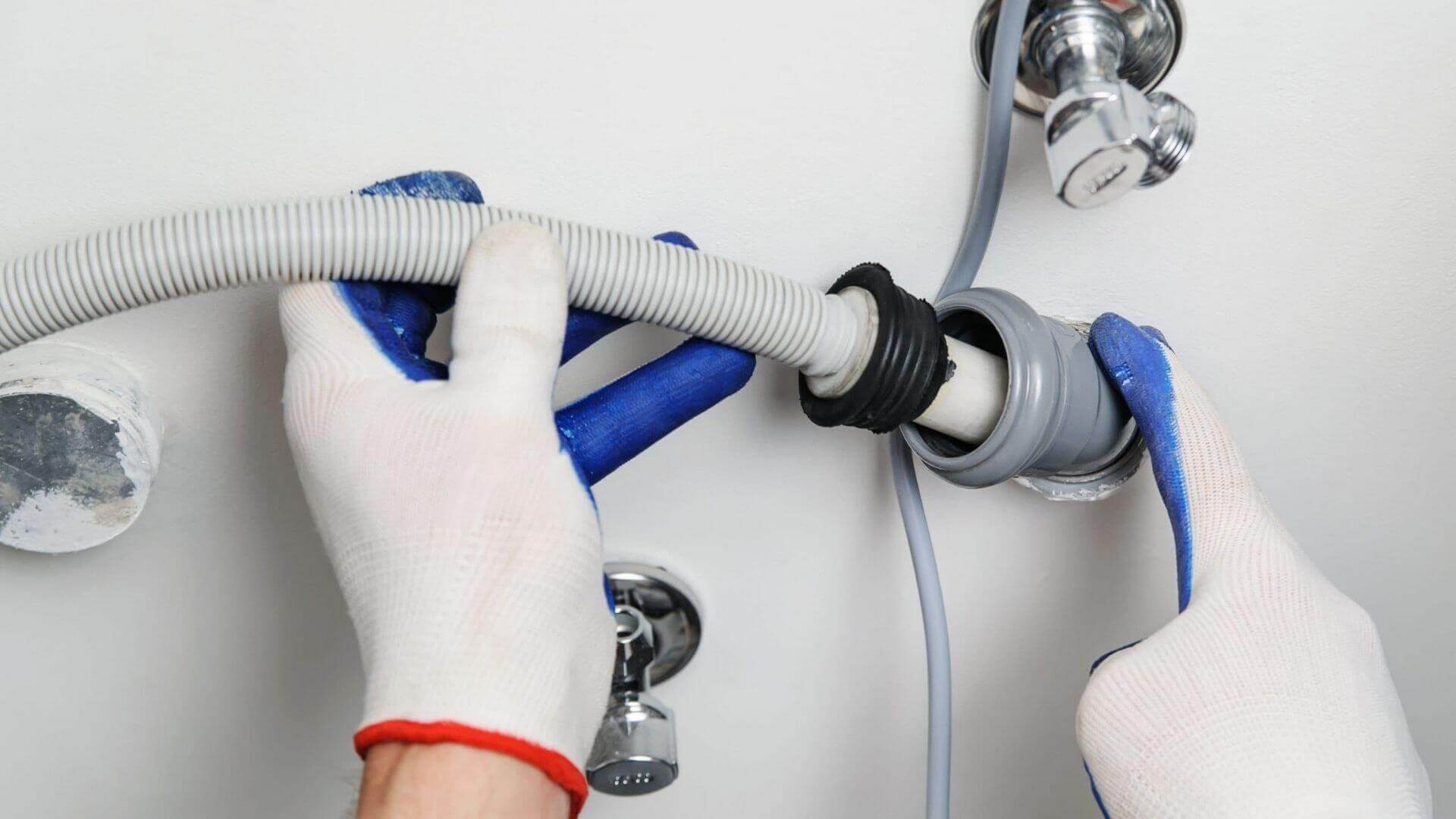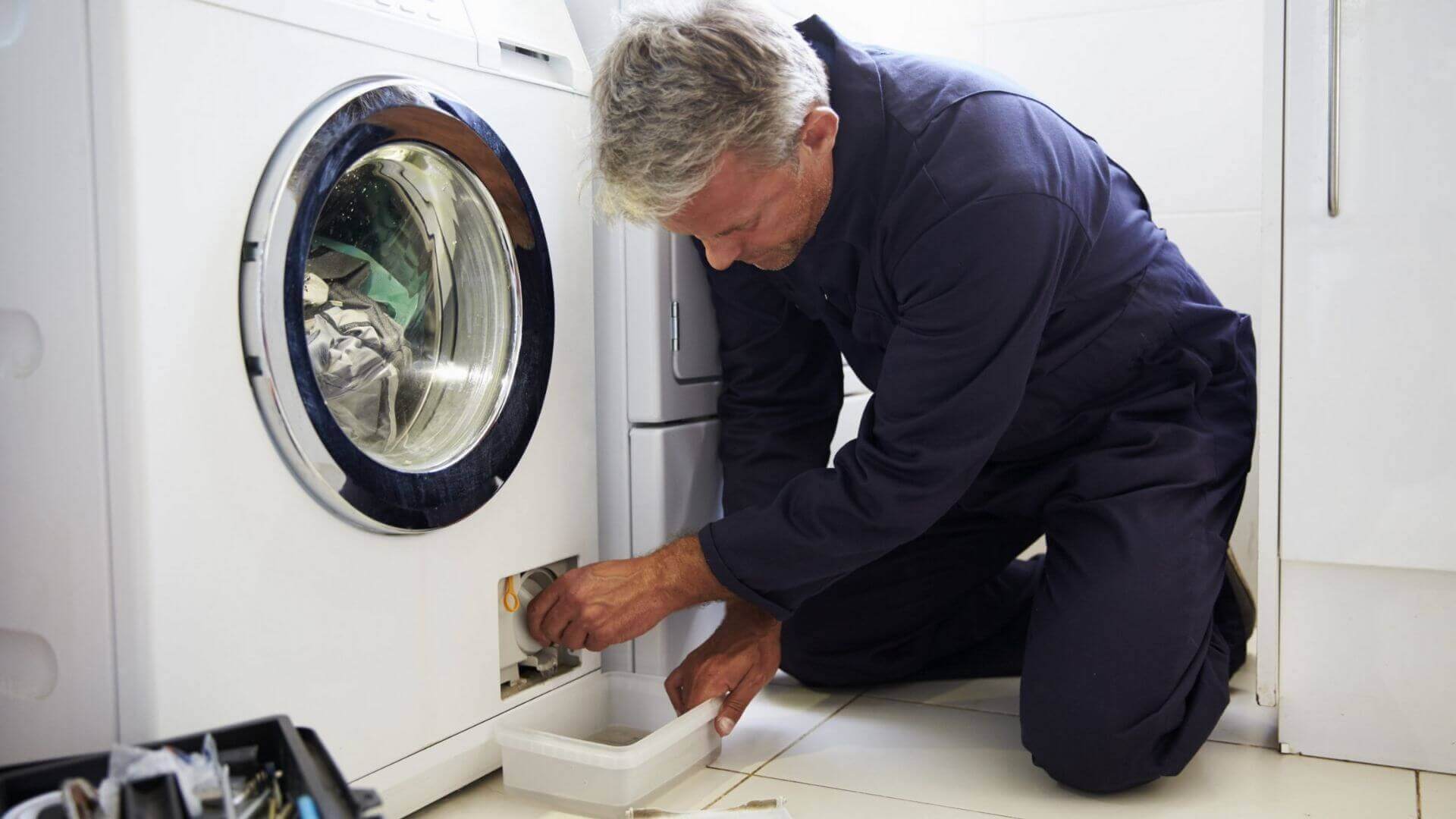A malfunctioning laundry drain or a washing machine overflow is something many homeowners have likely faced.
Modern washing machines can overflow during a wash cycle for various reasons. Older machines, for instance, tend to use more water. When a large volume of water rushes into the pipes, overflows are common. Typical issues when a washing machine drain overflows are blockages and leaks. Water pooling around your washing machine for too long can cause severe damage to both the machine and your plumbing system due to clogged pipes.
Avoiding an annoying puddle of water around the machine is essential and relatively easy. With proper knowledge, you can eliminate any unwanted blockage in the washing machine drain pipe that can otherwise lead to overflowing, backflow, or clogging in the main sewer line.
This guide will explain everything you need to do to prevent laundry drains from overflowing. We will also discuss preventative measures and what to do if your washing machine drain pipe and the situation have already gotten worse.
Ready to get started? Let’s dive in without further ado!
Reasons Behind An Overflowing Laundry Drain
Before tackling an overflowing washing machine drain, it’s important to pinpoint the root causes. By identifying these early, you’ll increase your chances of addressing the problem promptly.

1. Overloading
This problem arises when the pipe is too narrow for the load. Sometimes, the pipe is insufficient to drain the entire volume of water that the washing machine discharges.
In some extreme scenarios, the washing machine drain hose may go too deep into the drain pipe. As a result, it becomes difficult for the wastewater to drain correctly. A kinked discharge hose can sometimes cause the drainpipe overflow issue.
2. Clogging Or Blockage
Remember that when water comes out of the washing machine hose, it is not just water but much other stuff. This discarded water is filled with grime, dirt, and, most importantly, soap scum or soap residue.
Waste accumulates with use at the end of the drain hose attached to your washing machine, slowing down the water passage or causing the washer drains to overflow, eventually leading to a clogged drain. You will soon see that it starts creating back pressure and making the discarded water flow backwards. But don’t worry—a clogged or blocked drainpipe is avoidable when you take corrective measures. You can equip your washing machines with a lint trap or filter and clean them at least once a month.
Ways To Stop Laundry Drains From Overflowing
There are multiple ways to fix laundry drain blockages and prevent washing machine drain overflow. Some methods are long-term solutions, and others are more temporary. You can choose a DIY solution or a cheap alternative, replace your laundry with a high-efficiency washing machine, or call a professional plumber who can better fix the situation.
On that note, let’s take a look at all the methods.

Permanent/ Long Term Solutions
1. Replacing The Pipes
One of the best ways to deal with malfunctioning washing machine drains is to prevent items from causing blockages. You can also replace your laundry drains with new ones. Older buildings often have outdated pipes that are unsuitable for handling modern water loads.
You should consult a professional plumber whenever you consider replacing the pipe or your aging discharge hose. They are best suited to tell you what problems are in the pipes. If there are significant problems, the plumbers might need to look behind the walls and find ways to replace the pipes.
Calling a plumber to help you is indeed expensive. But once you finish it, the problem will not crop up anytime soon.
2. Changing The Washing Machine
Old models often release more water than new models. When the pipes cannot handle this heavy water flow, there’s always a chance of backflow.
Don’t worry; there is a way out of this problem! Change your old washing machine for a new, more efficient one. High-end machines are not only efficient in preventing backflow but also prevent water wastage.
Although it might seem a hefty investment initially, you can conserve money and water in the long run.
3. Installing A Laundry Sink
Sometimes, laundry drains become blocked when hand washing bulky items like shoes and clothes. Consider installing a dedicated laundry sink to handle this.
This not only prevents overflows but also offers extra utility. To boost its effectiveness, use a lint catcher at the hose’s end to catch blockages. This one-off purchase could save on costly plumber callouts.
Temporary/Short-Term Solutions
1. Using A Drain Snake
When dealing with a blockage manually, it is best to use a drain snake. And finding a good one on the market would not be challenging. The task of a drain snake is to snake through a clogged pipe and clear the blockage manually.
You must keep inserting the drain snake into the laundry pipe until you face some resistance where the block is located. Once you find it, keep turning it and tugging it to ensure the residues come out and the blockage is cleared.
Consider using the drain snake regularly, instead of waiting for issues to crop up. Regular cleaning helps prevent blockages and reduces the risk of overflow.
After using the drain snake, pour boiling water down the pipes. You can also make a homemade drain cleaner by mixing baking soda and vinegar for an effective way to keep your drains clear.
2. Lint Catcher
Every homeowner has faced the problem of lint clogging different pipes in the house, especially the laundry pipes. Hence, using a garment or lint bag, or better yet, installing a lint catcher (use a wire mesh lint catcher over the end of the drain hose), can be a good idea to keep the problem in check before it gets any worse.
Lint catchers come in various forms, such as metal and fabric mesh, and you can choose what you like. Since they catch lint and other debris, remember to clean your lint catcher regularly to ensure that it is free from lint residues and that the drain does not overflow.
3. Enzymes
If lint catchers and drain snakes are insufficient, using a suitable enzyme can also help you deal with a clog. Lint catchers are ideal for eliminating the lint, but to get rid of the soap scum, it is essential to use enzymes at least once a month for effective unclogging.
You can use multiple enzymes, but the most common ones homeowners use are Bioclean, Flo-zyme, and Zep. This is more of a preventive measure, and when done regularly, it can keep your drains from clogging frequently.

Stopping The Laundry Drain From Overflowing
With that, it is a wrap for today!
We hope this guide has improved your understanding of dealing with blocked laundry drains. Acting swiftly is crucial to prevent minor issues from escalating into major ones.
With the right tools and techniques, tackling an overflowing laundry drain can be straightforward. If the problem escalates or you’re not comfortable with DIY fixes, it’s best to call a plumber.
If you’ve got any questions, feel free to drop them in the comments for our licensed plumber. And don’t forget to check back here for more interesting content.
See you next time!














